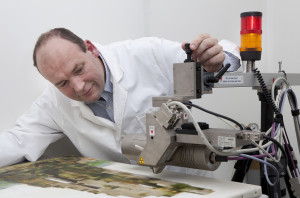Art conservation is the preservation of artwork. Curators of art museums try to appropriate works of art they feel will encourage greater patronage. In some cases, these art museum curators require the services of highly experienced, professional art conservators. Generally, this occurs when artwork has been found to be of considerable value in estate sales and through art dealers who do not want to repair damaged artwork.
The Unique Skills and Talents of Art Conservation
In addition to repairing damaged works of art, the skills and talents of professional art conservators requires them to visit art museums to ensure great works of art remain in top condition in an uncompromising environment.
To show the depth of importance of art conservators, these professionals all adhere to “Guidelines and Standards of Practice” as set forth by the professional organization, AIC (American Institute for the Conservation of Artistic and Historic Works).
Thus, an art conservator is experienced in proper pest and climate control, museum facility security and a broad knowledge of original artists’ use of color and design. These professionals must be able to detect an “overpaint” of a famous work of art and recover the original painting hidden beneath the overpainted artwork.
Tools of the Art Conservation Trade
In order to properly conserve artwork for preservation purposes, proper tools are needed by conservators. These include small implements like erasers, spatulas, tweezers, bone folders and cotton swabs. These tools help the conservator preserve works of art with such details as to appear untouched by other than the original artist. They also require a handheld black light to uncover “overpaints.”
Why is Art Conservation Important?
To understand the underlying factors of art conservation, it is important to study art value. The Metropolitan Museum of Art, for example, generates a large patronage as a result of changing art exhibitions regularly to attract public interest.
An art conservator is required to store and lock away valuable pieces of art at this museum to make room for these displayed exhibits. The job of the art conservator is to properly transport works like 18th Century pastels, DaVinci, Matisse or Monet paintings, works of art from privately owned collections or those that are specially commissioned.
Conserving works of art is of primary importance in order to create the durability of artwork and also to preserve a continuance of the love of art for future generations.
